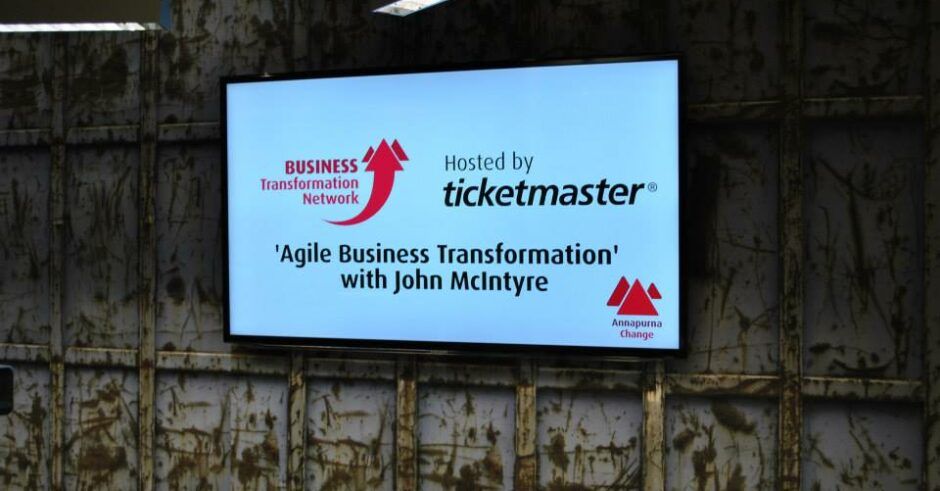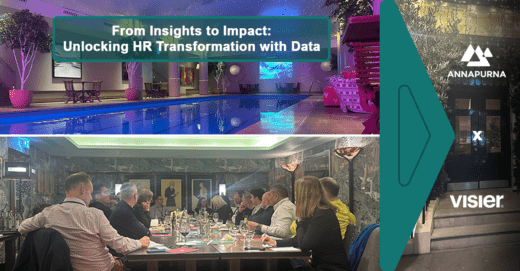On Thursday 3rd September, the Business Transformation Network & Ticketmaster hosted a VIP invitation event on ‘Agile Project Management’.
The event was fronted by John McIntyre, Head of PMO/Projects at Ticketmaster, who has over 15 years experience helping organisations deliver projects and programmes that deliver business outcomes.
A selection of photos from the night is available at the below link:
https://www.facebook.com/media/set/?set=a.682781948524908.1073741840.200129683456806&type=3
The BTN & Ticketmaster event was John’s idea, as he looked to explore how professionals perceived Agile internally after touching on the subject from attending a previous BTN event.
The evening was kindly facilitated by Sab Raza (Director of PMO at Ticketmaster) and Jeff Wellstead (Transformation executive & CEO of Big Bear Partners)
The first group was facilitated by Sab Raza, Director of PMO at Ticketmaster.
Discussions topics were:
What are the differences between Agile and Classical methods?
What are the differences in Engagement in an Agile practice?
Sab compiled the discussions into the following points:
“Agile and classical management styles both have a place in today’s large organisation and this was generally the view held by the group. Whilst much lauded and oft identified agile benefits such as better manoeuvring, time to market and acuity all resonated with the group, so too did the typical benefits of classical approaches where fulfilling the demands of sequential delivery are the imperative.
On successfully becoming agile, transformational challenges were realised; self-organising teams with influence, customers that are available and really engaged, and a fully supportive eco-system that lends itself to the working practices. These aren’t immediate traits of large and established organisations and sometimes underappreciated as challenges.
I do sometimes wonder if these organisations would ever see any short-term increase (or no decrease!) in market cap by embedding agile techniques given their size and complexity, but I have no doubt in the visible confidence and momentum they bring. The motivation to remain competitive has always been thrilling and it’s great to see organisations learning how the value chains of agile organisations are being delivered (and expressly those with disruptive products and services), just as the group tried that day.”
Jeff Wellstead, founder/CEO of Big Bear Partners, facilitated the second group.
Jeff is a transformation executive who has successfully driven rapid global growth, core organizational change, corporate reinvention, sweeping C-level executive talent acquisition, and short and medium term commercial turnarounds.”
Discussions topic were:
The changing role of HR in driving Agile work practices
Describe some of the best change management programs
Jess compiled the discussions into the following points:
“What we ended up talking about was more about the changing world of work, organisational design, ever more flat structures centred around the team vs. the hierarchy, and the role that leaders/managers, HR, and employees play in the 21st Century organisation.
Initially, we talked about the difference between Agile and Waterfall project work environments, wherein Waterfall was the more traditional, linear and sequential approach to getting things done “in order,” where step 1 leads logically to step 2, 3 and so on… Teams are grouped by expertise and complete their work such that they then send it down the assembly line to the next group of experts to do their part.
Agile work practices ensure that, once a vision is decided, cross-functional teams are arranged to address multiple work streams simultaneously, organising their work into 2 week sprints and meeting every morning and evening in ‘scrums’ (or stand-up meetings) designed to capture what needs doing, who will do it, and what then got done. Work streams are tracked and organised by a Scrum Master, who is very much like the old “Program Manager” but is ensuring that the teams are functioning effectively, and the work is getting done on time, on budget and is well coordinated across the various groups.
It’s actually not a new concept as high-tech and engineering companies and certain manufacturing companies have employed similar approaches for decades. Think about NASA, Boeing, Whirlpool, Volvo, Xerox, IBM, Pixar, Apple, Intel, etc. to name but a few. But interestingly, Agile work practices often end up belonging to the engineering domain and seldom make their way into other functionalities such as Finance, Marketing, Sales, HR, Support, etc. Well, that used to be the case until the Technology Revolution kicked off an entirely new concept known as the Exponential Organisation (see Salim Ismail’s book by the same name for deeper insight), which are companies that are fewer than 50 people, usually less than 5-8 years old, who have reached and engaged millions of customers whilst outsourcing most of the traditional infrastructure we used to build or buy and own. They are valued in the billions of dollars/pounds and are massively disruptive in that they are rethinking traditional business models and going straight to the consumer for product development advice and instant feedback. Sales, Marketing, HR, Legal, IT & Infrastructure, Compliance and other seemingly fundamental constructs inherent within 20th Century companies are outsourced, and the core intellectual property or algorithm that is the core to the company’s success is the only thing that is held internally and well protected, nurtured and improved upon.
The level of disruption in traditional industries is breathtaking, if not horrifying (for those who are still employed by more traditional organisations), and John Chambers, the former CEO of Cisco Systems, predicted this past year that 40% of the Fortune and FTSE 100 companies would no longer exist in 10 years time as a result of their inability to embrace the digital revolution and become lean, customer focused, be able to risk product and brand cannibalism and cross the chasm into a brave new world.
Thus, larger, more mature enterprises are now looking for ways to embrace the new work flow paradigm, the new ways of working and risk devolving authority and decision-making down to team leaders, where it traditionally was held by the upper echelons of the ivory towered hierarchy. Agile is central to that way of working, but it’s clear that the remit of the leader/manager, HR, and other more gate-keeping functions like risk/compliance, legal, brand management need to engage with changing the way they support Agile teams to go off and co-create new products, new lines of business and keep the flow of revenue and innovation alive.
We talked about the changing role of the leader/manager as being a coach, mentor, point of reference, referee, facilitator – instead of the traditional decision-maker (and bottle neck) regarding all elements of a company’s employee efforts. If you read Laszlo Bock’s book Work Rules! (he is the VP of People Operations at Google), then you soon realise that no more does the leader/manager make such key decisions, but rather provides a framework within which the team they support operates. Even to the point of handing over decisions about employee pay, promotions, and whether or not work output is used in key releases into the product suite to employee peers to decide – creating more of a ‘holocracy’ based on pure meritocracy than a more traditional dictatorship or oligarchy like command and control approach embraced by 20th Century companies.
HR’s role is moving away from compliance and guardian-like care-taking (much of that is outsourced to external call centers or in-sourced to shared services environments. Instead, HR is all about producing productivity dashboards, tracking the enterprises’ progress toward corporate objectives, as well as keeping the wheels greased for co-creating teams and supplying guidance regarding role definition, training and development regarding best practice and supplying the tools and methodology to improve collaboration, cooperation, and knowledge sharing across the company. HR also needs to devolve traditional decision-making with regard to performance management, promotions, pay, reward and career structures to team leaders and employees such that they can make informed choices at the team level – whilst HR simply monitors data and patterns from afar to ensure internal equity and market competitiveness. HR might also provide work stream enablement for processes like recruitment, and tools for talent management, learning and knowledge sharing/management – but doesn’t run around like a nanny telling everyone they’re doing it wrong and showing them how to operating in lock step. Teams need to know what values the company expects people to operate within, but not babysat at every step such that they feel stymied or held back from operational freedom. We mentioned Reed Hasting’s Netflix Manifesto, developed by Tawni Cranz (head of Netflix HR) wherein an overall value set was developed, and smart people were hired, trained, promoted and paid to then go and deliver.
Change was understood now to be the ‘new normal’ and fully embraced as a core underpinning to all things related to the 21st Century enterprise. If it isn’t broke – make it better. If it is broke, fix it. But never presume that just because something isn’t broken or is simply ticking along – that it doesn’t need improving. So concepts like Kaizen (the Japanese continuous improvement model), 6 Sigma and other such continuous improvement approaches as essential to embed within the new team structure. If you aren’t always challenging teams to look into how a concept, idea or output can be improved upon, you’re not doing the right work. Question everything, test it all with your customers in real time, and then change to meet the new demands and requirements or risk losing to your competition. It’s the rapid adaptation model. Also check out www.responsive.org to get a sense of how organisational practitioners are talking about this radical change to creating highly responsive and adaptive organisations across the People, Process and Technology dimensions.”
Thanks to all the business transformation attendees, the BTN’s next event is on October 15th at Soho Hotel about ‘Digital Transformation’.
To learn more, please email daniel@annapurnarecruitment.com



